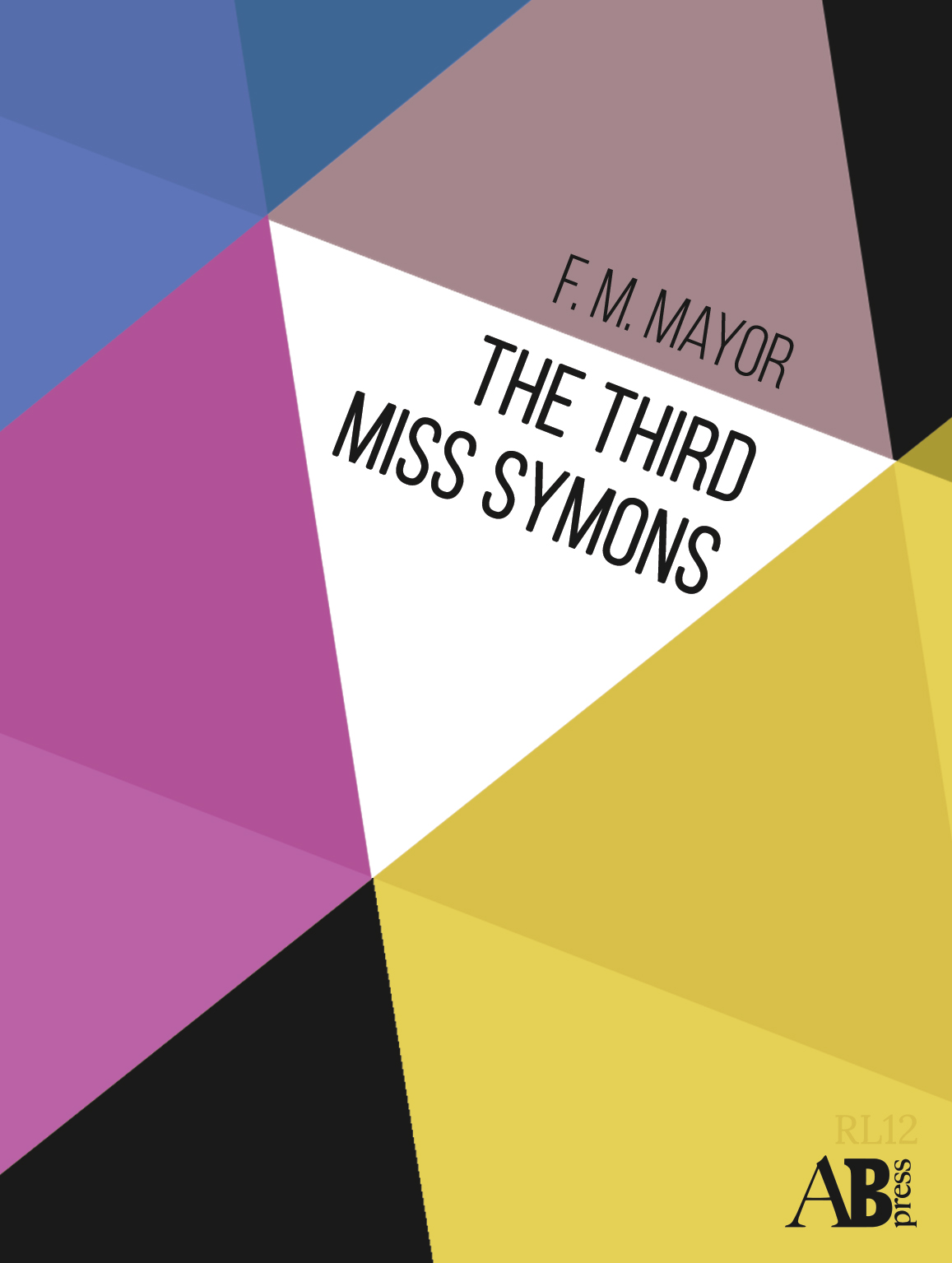Biography
The Third Miss Symons was Mayor’s first literary success, published in 1913. An earlier novel, Mrs Hammond’s Children, had been published in 1901 and failed to attract notice. “Miss F. M. Mayor, is a true artist,” noted The Daily Telegraph in 1913, “restrained but confident in touch… her elaborate study of a spinster’s life… is brilliantly clever, actual, and sincere. Without the slightest attempt to play upon the feelings, it reaches to the very heart of things, and leaves the reader with an aching sense of the intolerable waste of human nature.” The New Statesman compared Mayor to Jane Austen. Mayor’s style is gentle and observant, and she wrote chiefly about disillusioned heroines who received little attention and had been passed over. The spinster had become a near derogatory theme in British culture before and, exaggeratedly, after the First World War. Mayor herself was a spinster: her fiancé died in India in 1903, and for the rest of her life she lived with either of her brothers, her twin sister or her ageing parents.
Reviews, whilst mostly favourable, were mixed, and might have been dependant on the worldview of its author. Anti-feminist male reviewers were quite harsh on the book’s heroine, held to be pathetic by many, and scorn elided often with moral reproval. “Henrietta Symons is a woman with absolutely nothing to recommend her …a superfluous woman,” opined The Morning Post; “Every woman should read this book as a shameful, if pitiable example of a life wasted,” was the stern reprimand from The Irish Times. Feminist reviewers were dubious that Mayor had confirmed the view that women were inferior or benighted. The Englishwoman, a pro-suffragist weekly, “could hardly bear to read it.” Some slammed the poor example Henrietta Symons offered, and others regarded her as a model to fight against. But Mayor’s feminism, perhaps focused on the individual more than the collective, was too subtle for some. Her sister, Alice, wrote to her brother after Flora’s death, that: “The mystical experience at the end was the root of the book round which the whole thing was written.”
Mayor’s next, longer novel, The Rector’s Daughter, is considered to be her best and, after rejections elsewhere, was published by the Woolf’s Hogarth Press on a commission basis. It had some favourable review, including E. M. Forster’s. Yet today, as in her own time, Mayor remains an isolated figure in the literary community. Certainly she held unfashionable political views: an unenthusiastic and tempered suffragette (she sought to internalise the question; many see The Third Miss Symons ultimately as a strong feminist tract), a supporter of military involvement in the Great War (she referred with disdain to the “Bertrand Russell gang” and “Lytton Strachey set”), and a political conservative in peacetime. In some respects – certainly her biography and subject matter – she is a figure from the nineteenth century. Her family were serious and cautious (though not overly protective), but Mayor had the constant attention of seven unmarried aunts, each born before Queen Victoria came to the throne. And the material of her two significant novels is certainly retrospective in tone: spinsters shrouded with Victorian ideals and who lack the means to personal fulfilment. May Sinclair’s The Life and Death of Harriett Frean is also concerned with spinsterhood, but Sinclair’s style and purpose of writing is much more forward thinking, and she was, unlike Mayor, an ardent feminist.
FLORA MACDONALD MAYOR (1872-1932) came from a family steeped in academia. Her father was Emeritus Professor of Classics at King’s College, London; her paternal uncle was Professor of Latin at Cambridge; her mother was the niece of the historian George Grote and a fine linguist. At school, Mayor was described by a friend as “appallingly clever,” and she went on to study history at Newnham College, Cambridge. Her sister, Alice, noted that at Newnham “she burnt the candle at both ends and her health never recovered.” She received a third class degree and was unresolved about any career choice. She settled to work as an actress and wrote in her spare time. After the death of her fiancé in 1903, she lived with either her identical twin sister or brother for the rest of her life.
The Rector’s Daughter, published in 1924, despite its good reviews and publishing association, sold poorly. She then took to writing ghost stories, which were admired by M. R. James; these were collected after her death in The Room Opposite and Other Tales of Mystery and Imagination. A last novel, The Squire’s Daughter, was published in 1929 but it was poorly received. She died of pneumonia in 1932; by then her literary career had declined so far that The Times neglected to publish her obituary, even though composed by John Masefield.



